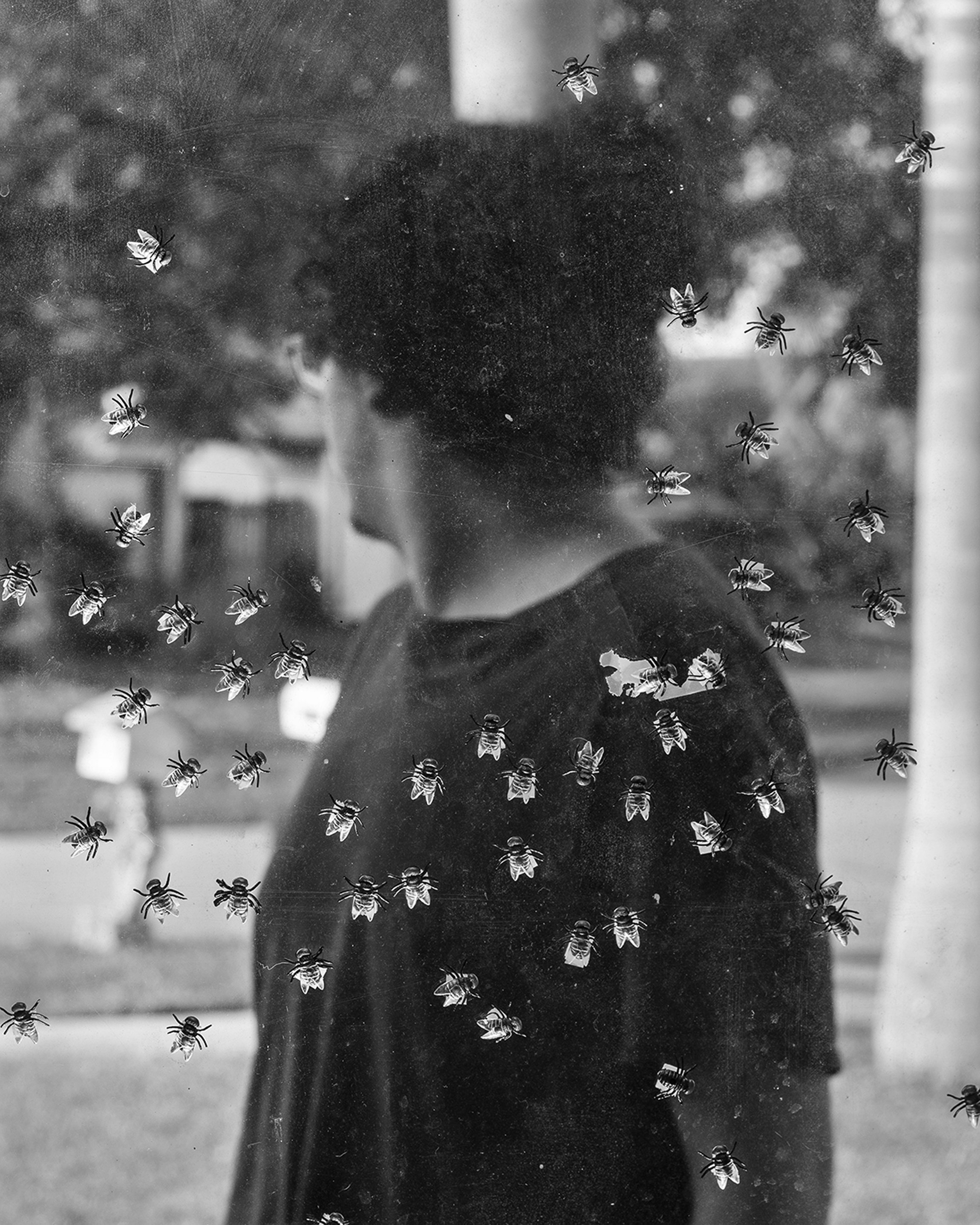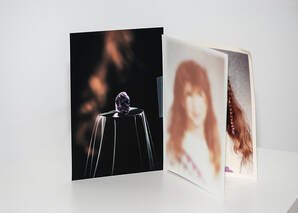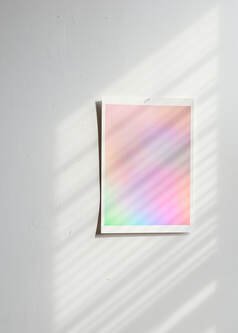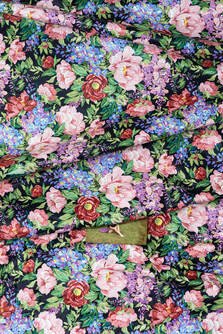©Armando Zamora
This is hopefully the start of an interview series with photographers I respect about issues in contemporary photography. This first interview is with photographer Armando Zamora about the potentially elitist nature of International Art English (IAE). Armando Zamora (b.1994) is an interdisciplinary artist from Ft. Lauderdale, Florida. He received a BFA in photography from Parsons The New School of Design in 2016 and an MFA in photography from the Rhode Island School of Design in 2019. His work explores themes of truth, reality, perception, and the tension of not knowing. He currently lives and works in South Florida.
Niko
Armando
Hi Armando!
Thank you so much for agreeing to do this. This will be my first interview of any kind so if things feel a little awkward let me know and I can try a different approach. I have a list of questions prepared ranging from your early work with photography to larger hypothetical questions about the future of the medium. I can give you the whole list or we can start from a question and see how the conversation develops. What I'm hoping to have is an honest conversation about something we are both passionate about in a way that is understandable to people who haven't been taught "art jargon". Now that I'm a college graduate and trying to make it as a photographer I find myself very aware of the language used to describe the work of my peers when applying to the same open calls/residencies/group shows/publications/etc. I've always kind of felt like I lacked in the writing component of my work because I've read so many artist statements that just seem to have such a strong grasp on art vocabulary and how to write about their work in a way that enhances it. But as I've become more critical I start to wonder how much of what is written is true? I'll use an example here from Pearl Press (a publication we have both been featured in) about the photographer Chloé Milos Azzopardi. It's written in the article "Her work explores the relationships between human and non-human beings, trying to get out of a prism of utility or servitude, while her research focuses on the representation of mental health, ethology and the construction of post-capitalocene imageries." Now I can't tell you what post-capitalocene means without googling it nor can I describe what a "prism of utility or servitude" is, but I know that I'm looking at images of a swan or a landscape or a person's back. Where these words and images connect, I'm not sure, and I'm not sure with contemporary photography that a connect is expected. Now I love Azzopardi's images, this is not meant to be a critique on them, but the article did inspire these thoughts. Has the expectation of art writing given permission to photographers to make work about nothing, but write it into something?
Niko, thank you again for reaching out. Like many others, I love to run my mouth about things I care about. Any approach works for me - I'll follow your lead. I'll start with tackling this question:
Has the expectation of art writing given permission to photographers to make work about nothing, but write it into something?
Yes. But it gets complicated quickly. For starters I don't place the blame on the artist entirely. International Art English (IAE), which is what Alix Rule and David Levine have called the kind of art speak/writing we are talking about, is like any other language. It is learned. Someone had to teach us how to speak like that at some point. For a lot of us it was a professor working in an institution. I place most of the blame on these institutions who have adopted this way of communicating art in an effort to preserve their status and power. However I don't expect these academic institutions or their cousins (galleries, museums, etc) to move away from this adopted language because why would they release any of their power? By forcing this way of speaking on to artists and the art world at large, they've secured a position of authority that forces us to either learn this language and adopt it or fail. It is no coincidence that most residencies and applications seem to heavily favor the written section.
Before I go further into the web of corruption and weaponized language, I want to go back to how it affects how we think about and write about our work. For some, sure it has given them the permission to rely on their writing to give the work some backing. But I don't think this is the majority. I think the majority of us are speaking like this because we know we have to and as a result we are being forced to do something really really hard. Understand our work. Because of IAE it is not acceptable to speak simply about the ideas or feelings you may be having about your work. You have to have it completely figured out. Or at least sound like you do. I can only speak from my own experiences and from what other artists have told me while not in front of a professor or curator. Personally, I have no firm grasp on what I'm doing or what it means. I have ideas, sure. But I'd be lying if I said that my work concretely does something.
I had a friend, who's not so much of a friend now, once tell me after a bad critique in grad school that they didn't understand why they couldn't just take pretty pictures. Why did it have to be about something? Why did they have to know when they had just started? Why do we ever have to know? When and why did making something cease to be enough? At the time I was "all in" on the system because the knowledge of the debt I had was looming over me. So I didn't take their dilemma seriously. In retrospect, I realize now they were absolutely right to be confused and frustrated. They have every right to make work that is about nothing because all that means is that you don't understand it yet. Which should be ok. The bigger problem isn't that people are making work about nothing, the problem is that they're being forced to write it into something.
©Armando Zamora
I agree with your belief that major art institutions use IAE (a new term for me, thank you for introducing me to it, I love it) to enhance their prestige and maintain a sense of "power" over the way art gets distributed and discussed. It does make me wonder however when this language discrepancy started. Have we become more casual in our speech while IAE has maintained it's formality? Or did IAE emerge from a casual language to distinguish itself from everyday speech? I'm sure there is writing on this that I have not read yet, so I'll do some research and circle back.
So is the problem with IAE the pressure it puts on artist's? And then is the problem IAE or the fact that artist's are expected to write anything at all? Is IAE a collection of vocabulary or an intentional style of writing? Because with this problem, it seems the actual writing isn't the issue so much as the pressure to write. By using IAE, what issues arise?
I personally think it's both. Firstly, the expectation that we write about our work is kind of insane to me. Not everyone, in fact most people, can't write very well. 54% of adults in the United States are reading at 6th grade level or below . Expecting the artist to first of all work and develop their practice and then to be able to write about it and understand it usually WHILE making it is completely and absolutely ridiculous to me. Like, I cannot express how profoundly absurd I think this is. At what point did it become the artist's responsibility to interpret the work for the viewer? The viewer is being robbed of their own personal understanding of a work of art when we make the artist deliver the answer along with the question.
And then on top of this fuckstorm of nonsense, artists are now being expected to write in a way that only educated art-folk can pretend to understand. For what?
The problems that sprout out of this rotten tree we've planted affects not only the artist, but more importantly (in my opinion) the viewer. This is because we've established that art has an answer to itself. Meaning there's something to be understood. A destination. A finality. The viewer feels it's their job to figure this out. Like some complicated escape room mounted on a white wall. The text gives them an answer. But at the cost of the viewer not finding their own. I find this troubling because then art can very quickly turn from something that serves society into something that's just public masturbation. With IAE on top of this, the viewer can't understand the answer that's being provided. This leaves viewers feeling like they're inadequate or incapable of understanding and connecting with art. If we aren't making art for the viewer, who are we making it for?
The more I think about it, the more pervasive this problem becomes. However, it all seems to serve the same basic primary point that this is all a form of oppression used to keep certain people out of art spaces for the sake of profit. Because of this, I think it's more of an intentional way of writing than it is a set vocabulary. Although there are certain words you'll find over and over, it's more about what these words are meant to do. Which is to make the point of entry harder to get through.
©Armando Zamora
Do you feel a fear of misinterpretation is what encourages artists to find answers in their work? I agree, the work should be the "answer", and writing oftentimes shows there is something missing in the work that needs to be rectified in text. But work without writing becomes entirely up to the interpretation of the viewer, who brings all of their own biases into the way they view the work, which often leads to a misunderstanding of the artist's intent. Which obviously goes into a larger question about the importance of intent in making work. For me personally, my work has been massively misunderstood without writing and this misunderstanding prevents viewers of my work from understanding my intent. I've felt like I've needed writing to establish key dates, characters, and settings that I couldn't possibly convey just through images. Now when writing about my work, I do try to be aware of IAE and who I may exclude from understanding the work when using that language.
Your questioning the necessity of "answers" in art encounters similar problems of accessibility that we feel with IAE. Is there not an academic way to view art? I don't know that removing exclusionary writing from the work makes it more accessible because I find a certain foundational understanding of art and art history is required to enjoy/understand most contemporary shows at major institutions. I'm sure you can relate, but going to museums and galleries with friends who haven't had a formal art education is very eye opening. I've found they are much more reliant on the writing than on the work in front of them, which validates your point about answer seeking in art. But I've also seen that even when I encourage these friends to look beyond the words and to describe how the work makes them feel, they seem unable to give an answer. I see this as evidence of one of two things: either the art is bad and elicits no feeling, or they are so reliant on what is written that they are unable to feel anything viewing art without writing. Now I'm sure it is not so black and white but if we are assuming the end goal is to understand a work of art, is the middle ground to have writing but written in a common language? Is that the solution to maximize art legibility? (And is the term "art legibility" an example of IAE? I don't even know anymore)
We are stepping to larger questions that are harder to answer and break down but I'll try.
”Do you feel a fear of misinterpretation is what encourages artists to find answers in their work?”
Yes. I think that as a consequence of the system that has been established by museums, galleries, schools and others, we as artists are being taught to and expected to make things from a certain intellectual place. I don't know if this is good or bad. But the result of this is that then the work as a whole becomes harder to enjoy without some sort of formal education in art or viewing art. Which is something you brought up as well. We create work with a certain web of symbols and tropes that we have been taught and if you haven't been taught this esoteric visual language then it becomes hard if not impossible to access work. This is a whole other issue of language in art that affects the general public. In short, we are making art for artists and not for people.
I'm sure you can relate, but going to museums and galleries with friends who haven't had a formal art education is very eye opening. I've found they are much more reliant on the writing than on the work in front of them, which validates your point about answer seeking in art. But I've also seen that even when I encourage these friends to look beyond the words and to describe how the work makes them feel, they seem unable to give an answer. I see this as evidence of one of two things: either the art is bad and elicits no feeling, or they are so reliant on what is written that they are unable to feel anything viewing art without writing. Now I'm sure it is not so black and white but if we are assuming the end goal is to understand a work of art, is the middle ground to have writing but written in a common language?
At the museum I work at, I used to work closely with kids in elementary school. We would walk the kids around the museum and highlight three works of art. At each stop we would sit or stand in front of the piece and I would start to ask them questions instead of them asking me questions. The goal was to get the kids to start generating their own responses to a work of art and the responses would vary in complexity depending on the kid and their age. While all the work in the museum is contemporary and thus all different in style, theme, etc, what I found is that starting from about 3rd grade, almost everyone was able to come to similar conclusions about the works we looked at. What I learned is that a lot of people not only haven't been taught how to just look at something closely, they also don't want to because its a lot easier to look at text on the wall. But I think everyone has the capability of understanding a work of art to enough of an extent to know whether or not they like it. I think people are afraid to not like work. If the kids I was touring were super quiet I'd be very candid with them and assure them that not liking art is normal and okay. Then you'd see them shake their heads at something they didn't like instead of trying to be polite about it. I would try to get them to break down why they don't like something though. To look at it anyway and have reasons for dislike. I'm not sure what the answer is to get a wider public to engage with art more. I do know it's absolutely not with the language we have been using for so long. Maybe the art we are making just isn't accessible to people anymore? We share and view images more than we ever have and EVERYONE loves a good meme. Why are memes more resonant than a picture hanging on some sad white wall? I don't know. I don't even know that I want to understand anyone's work as much as I want to feel something from it. Like when I listen to Kendrick Lamar do I really understand what its like to be a kid from Compton and having a friend die? Not really. But do I feel the importance of love and faith and god in the face of hardship and the difficulty of balancing who I am versus who I want to be? I feel that and it moves me and inspires me. I may not fully "get" the story or the songs but I feel it. I want pictures that do the same thing. I want to make pictures like that and I want to see pictures like that. That's the closest thing to answer that I can think of.
”We are making art for artists and not for people”, that's a powerful statement.
What are the implications of this?
Maybe to wrap up this conversation (though I wish it could go on forever) I'd like to ask what your vision is for the future of photography? You are partially addressing this with the work you are currently doing at the museum, teaching a new generation of people to think about how they view art. I think we've established the barriers set by institutional art education and language and we both recognize they create problems in the accessibility of art. So in an ideal world, without concern for budget or audience participation or any other factor that limits effectiveness, how would you solve this problem?
I think the implications of art not being made for the public is that the public in general doesn't want to engage with art. It's like being at a party and knowing you're not really invited but no one is gonna tell you that. But again I don't place the blame on artists. I think as a whole we are doing what we think we should be doing based on what we've learned. It takes time and effort to unlearn though.
What I would like to see in photography and art in general is a rejection of the systems that currently hold authority within the art world. I think this takes an effort to acknowledge the broader problems of capitalism and how they affect how the art world operates. Like any market, the product is dictated by the desires of the consumer. In our case, the main consumers are collectors who tend to be rich and white. I want the target consumer to be the average person. Your neighbor, your friends, etc.
I personally don't think it's enough for galleries and museums to hire directors of color or to show work made by people of color. What I would like to see is organizations created and operated by marginalized people. Providing access to art work to other marginalized people for free or as close to free as possible with simple, normal, everyday language in the programming. In an ideal world we would get rid of the Guggenheims, RISDs, Yales, MoMAs, etc of the world and replace them with new institutions that aren't funded by the ultra rich and operated by their privileged and also rich friends. New institutions that understand the value of truly being a part of their local communities while reaching out to the rest of the world. Institutions that seek to educate the public about art in an accessible way that touches on the real and important concerns of the public in an effort to connect art to real life . Institutions that are operated in collaboration with artists to create a relationship that isn't parasitic and monetarily one sided the way it is now. I think we're due for an overhaul of how we present art to the public and I'm glad to be seeing new organizations prop up that are led by the marginalized. However, I would like to caution them. The temptation of funding is very real and it's how these institutions and people have retained their power. It's important that we seek our funding to be as diverse as the work. The temptation to use complicated language to validate these new institutions is also real. I hope that we can resist and seek to make art more accessible to people with the language that we use to talk about it. I hope we can resist the temptation to have shows at fancy New York galleries and instead champion the up and coming gallery being run by your friend. I hope that as we make new avenues for sharing our work we seek to be better than what we have now instead of just trying to take its place. This is a group effort and I think most of us have the right intentions, so I'm excited and optimistic. It just takes some time.
These conversations could and should last forever as we constantly develop and grow. My inboxes are always open and I'm always down to talk about these problems that I really want us to fix.
Forever,
AZ
©Armando Zamora
Follow and support Armando’s work: @sentientcomputer questionsnotanswers.com










